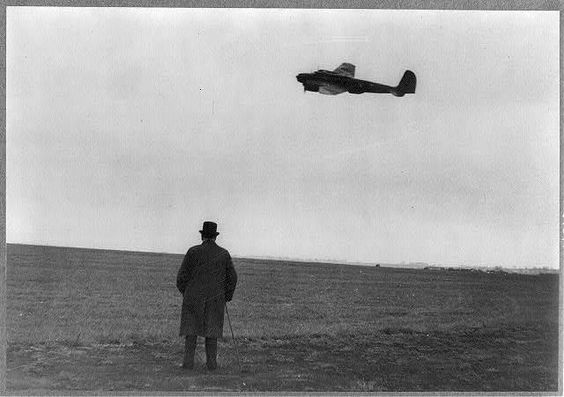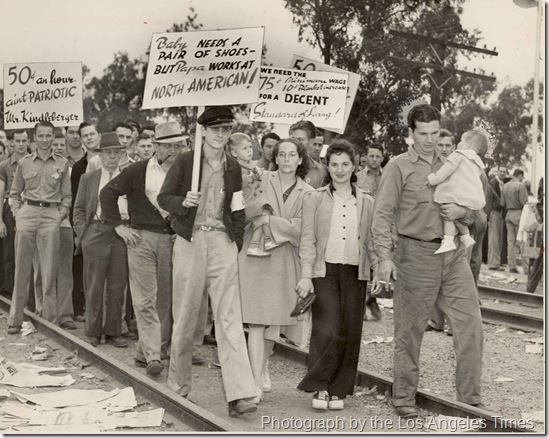Friday 6 June 1941
 |
| "Prime Minister Sees Flying Fortresses, June 6, 1941." Prints and Photographs Division, Library of Congress (121). LC-USZ62-49896. [Digital ID# cph 3a49988]. That would still be an impressive sight. |
[I]t was the first time in this war, or the one before, that British troops had hidden, like Germans, near a peaceful frontier, ready to make a surprise invasion.Since one of the post-war claims against former Reich officials after the war is that Germany practiced "aggressive war," this is a surprising admission.
British military intelligence believes, based on statements by Vichy French defectors, that morale in Syria is low and the French will not resist. In fact, the French have positioned the 24th Colonial, 22nd Algerian and 6th French Foreign Legion Regiments along the main coast road, supported by seven battalions of artillery.
British preparations, in general, are minimalist, with commanding General Maitland Wilson in Jerusalem relying on 1:200,000 maps and only 70 RAF planes allotted for Operation Exporter by Cairo (versus 100 Vichy French planes, including the most modern fighters in the French arsenal, the Dewoitine D.520).
The RAF shoots down a French reconnaissance plane over Palestine. It is a Martin Maryland, or Model 167F in French military terminology.
The British continue taking control of Iraq. They form "X" Flight at Habbaniya, consisting of Gloster Gladiators, to prepare to assist in Syria.
European Air Operations: The Luftwaffe sends a bomber over Durham which drops a single 500 kg bomb near the Liner Railway line at East Jarrow. Another bomber damages some houses at Whitefield Pit, Penshaw, causing three injuries.
 |
| "The Prime Minister, Mr. Winston Churchill, with Captain The Right Honourable David Margesson, Secretary of State for War, watching preparations being made in an unspecified UK location for the launch of a De Havilland Queen Bee seaplane L5984 from its ramp. The Queen Bee pilotless target drone was a radio-controlled version of the Tiger Moth trainer." © IWM (H 10307). |
Battle of the Atlantic: U-106 (Kptlt. Jürgen Oesten), on its extended second patrol out of Lorient, shadows Convoy OB-334 east of the Cape Verde Islands. It torpedoes and sinks 4573-ton British freighter Sacramento Valley. There are three deaths.
U-43 (Kptlt. Wolfgang Lüth), on its 7th patrol out of Lorient, is operating about 1100 km (600 nautical miles, 690 miles) east of Newfoundland when it spots an independent freighter. It pumps two torpedoes into 4802-ton Dutch freighter Yselhaven. The torpedoes break the freighter's back, and it sinks within two minutes. There are 24 deaths and 10 survivors - who are in their lifeboats until 15 June, when Finnish freighter Hammarland picks them up.
U-48 (Kptlt. Herbert Schultze), on its 12th patrol, is operating with Wolfpack West south of Greenland. It torpedoes and sinks 5201-ton British freighter Tregarthen. Everybody on board perishes.
U-46 (Kptlt. Engelbert Endrass), on its 12th patrol out of St. Nazaire, claims that it torpedoes and damages a tanker south of Greenland. According to Endrass, the tanker then rams U-46 while running in circles. There is no record of a tanker encountering a German U-boat at that time and place. In any event, U-46 continues with its patrol.
Finnish 5332-ton freighter Kastelholm, sailing southeast of Iceland. The cause of the sinking is unclear - some sources say it hit a mine (which is unlikely in the mid-Atlantic), others say that it is torpedoed by U-559 (Kptlt. Hans Heidtmann). U-559 is on its first patrol, having sailed from Kiel, and probably has not had sufficient time to reach this spot since sailing on 4 June. Whatever the cause, the Kastelholm sinks, and there is one death and 37 survivors.
Marconi also torpedoes and sinks 1392-ton Swedish freighter Taberg in Convoy HG 64. There are 15 deaths.
Italian submarine Venero, operating with submarine Marconi, also attacks Convoy HG 64 off Casablanca. It fires torpedoes but completely misses.
Italian submarines Emo and Velella also participate in the attack on Convoy HG 64, but their claims of successes are not supported by the Allied records.
The Luftwaffe bombs and sinks 2011-ton British freighter Glen Head west of Gibraltar. There are 27 deaths.
The Luftwaffe bombs and sinks 4767-ton Norwegian freighter Taurus a few miles off Johnshaven, Scotland in the North Sea. Everybody on board survives.
The Luftwaffe bombs and damages 168-ton British trawler Emulator about 8 miles east of Scarborough.
A Fairey Swordfish (RAF No. 824 Squadron) from the aircraft carrier HMS Eagle, operating in the South Atlantic, finds and sinks 9179-ton German blockade runner Elbe. There are 19 survivors, picked up on the 7th by ocean boarding vessel Hilary.
Convoy HX 131 departs from Halifax.
Canadian corvette HMCS Bittersweet is commissioned on the River Tyne, minesweeper Ingonish is laid down in North Vancouver.
USS Terror is launched. It is the first US naval vessel designed as a minelayer.
 |
| The East River is pictured below Brooklyn Bridge, linking Brooklyn and Manhattan, on June 6, 1941 (Charles W. Cushman, color original) |
Operation Battleaxe, the planned British offensive on the Libyan frontier, is pushed back from 7 June to 15 June. The reason is the failure of British tanks to reach the units of General O'Moore Creagh.
Operation Rocket, the latest supply mission from Gibraltar to Malta, reaches its climax as Royal Navy aircraft carriers HMS Ark Royal and Furious send 44 Hawker Hurricanes to the island. Of the 44 planes, 43 make it successfully and one turns back with mechanical problems. There are 25 of the faster Mark II model of the Hurricane. The RAF divides the planes among Malta's three airfields.
The Luftwaffe attacks Malta three times during the day. The targets are Kala Bay, Ta Qali airfield, and Luqa airfield. No planes are lost by either side, and not much damage is caused.
 |
| The view from Battery Park toward the Statue of Liberty, 6 June 1941 (Charles Weever Cushman). This picture is an original color photo taken on Kodachrome. |
The Waffen-SS has been recruiting in Finland. Today, the first 120 Finnish volunteers head to Germany for training. They are to form the Finnish Volunteer Battalion of the Waffen-SS (German: Finnisches Freiwilligen-Bataillon der Waffen-SS) of the SS-Regiment Nordland of the SS Division Wiking. The men have signed up for a two-year commitment.
 |
| The cover page of the 6 June 1941 Commissar Order. |
to be separated from the prisoners of war immediately, i.e., already on the battlefield.... These commissars are not to be recognized as soldiers; the protections due to prisoners of war under international law does not apply to them. Whey they have been separated, they are to be liquidated.The order leaves it to the local commander's discretion as to whether the commissar is "guilty" and thus should be "finished off" based on the commander's "personal attitude and bearing of the commissar."
Commissars are attached to all military units in the Red Army. They have dual command authority over the troops, which includes military operations. They primarily are responsible for the political indoctrination of the troops.
This is a blatantly illegal order that flouts all principles of international law. The Reich is bound by the terms of the Geneva Convention of 1929 regardless of the fact that the Soviet Union did not sign it, as the Geneva Convention specifically provides:
In case, in time of war, one of the belligerents is not a party to the Convention, its provisions shall nevertheless remain in force as between the belligerents who are parties thereto.Hitler argues that the Soviet Union is not protected by any terms of the Geneva Convention because it did not sign the Convention. There is little doubt, however, that the OKW does consider the Commissar Order, regardless of its perceived appropriateness, illegal.
Only the most senior commanders receive the order, and they are instructed to tell their troops of its contents verbally. Some do, and some don't.
During the day, Admiral Raeder meets with Hitler to discuss the war in the Mediterranean, which Raeder strongly believes is the key to defeating the British. Hitler, however, is not interested, his focus now is on the East.
British Military: The Air Ministry orders 454 Avro Lancaster Mk I heavy bombers. They are to be powered by Merlin engines. The Air Ministry also orders two Lancaster Mk II bombers, to be fitted with Bristol Hercules VI engines.
 |
| (USS Enterprise CV-6) underway in the Pacific, June 1941 (US Navy). |
US Government: President Roosevelt claims during a press conference that German propaganda is misleading many Americans into thinking that Great Britain is on the verge of surrender.
President Roosevelt signs a bill (Act of June 6, 1941, 55 Stat 242, "The U.S. Ship Requisition Act") allowing the US Navy to requisition all idle foreign merchant ships in US ports. He also signs an executive order (9848) authorizing the Maritime Commission to operate or dispose of the ships in the interest of national defense. These new laws affect 84 foreign vessels in US ports.
China: The Chinese 5th Pursuit Group receives six Soviet I-153s to use as night fighters. The need for such fighters became very clear on the 5th, when a Japanese raid in the evening hours, caused thousands of deaths in the Nationalist capital of Chungking.
 |
| New York Times, 6 June 1941. |
I cannot tell you the point at which we may become involved in war. Neither can any other American. All we can know is that if and when Hitler thinks it is to his advantage, he will make war upon us.Willkie notes, however, that the is "not divided but the United States of America."
Louis Chevrolet, the co-founder of the Chevrolet automobile company, passes away at age 62.
Strikes continue at North American Aviation and Walt Disney Studios.
June 1941
June 1, 1941: Farhud Pogrom
June 2, 1941: Massacres on Crete
June 3, 1941: Kandanos Massacre
June 4, 1941: Kaiser Wilhelm Passes Away
June 5, 1941: Death in Chungking
June 6, 1941: Hitler's Commissar Order
June 7, 1941: Commandos Strike at Pessac
June 8, 1941: British Invade Syria and Lebanon
June 9, 1941: Litani River Battle
June 10, 1941: British Take Assab
June 11, 1941: Hitler Thinking Beyond Russia
June 12, 1941: St. James Agreement
June 13, 1941: Lützow Damaged
June 14, 1941: Latvian June Deportations
June 15, 1941: Operation Battleaxe
June 16, 1941: The Old Lion
June 17, 1941: British Spanked in North Africa
June 18, 1941: Turkey Turns Its Back
June 19, 1941: Cheerios Introduced
June 20, 1941: Birth of US Army Air Force
June 21, 1941: Damascus Falls
June 22, 1941: Germany Invades Russia
June 23, 1941: A Soviet KV Tank Causes Havoc
June 24, 1941: Kaunas and Vilnius Fall
June 25, 1941: Finland Declares War
June 26, 1941: Bombing of Kassa
June 27, 1941: Encirclement At Minsk
June 28, 1941: Minsk Falls
June 29, 1941: Brest Fortress Falls
June 30, 1941: Mölders Becomes Top Ace
2020


No comments:
Post a Comment